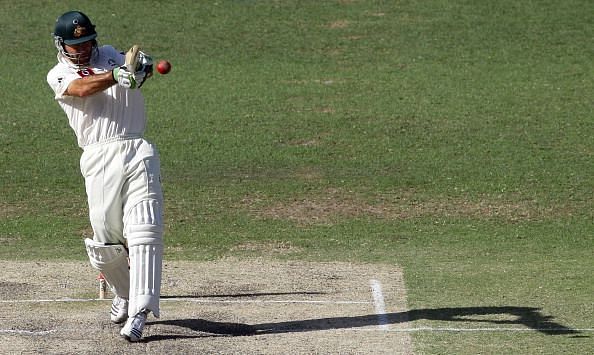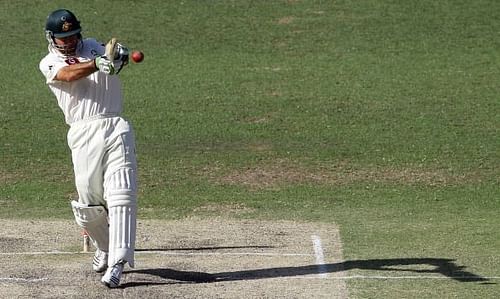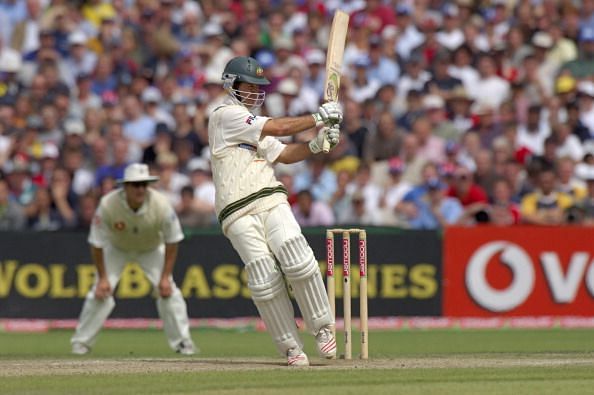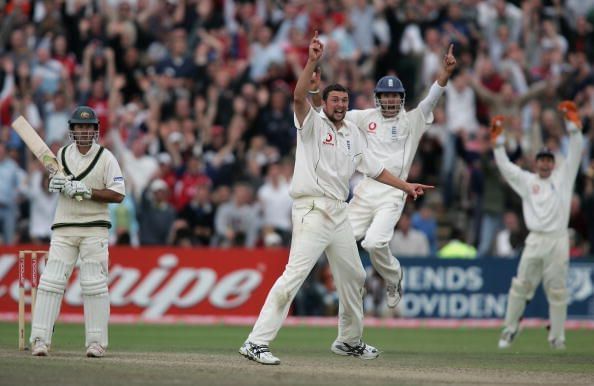
SK Elite: Ricky Ponting's gritty 156 against England, 2005

He was always ready for the pull.
A masterpiece that survived the tide of time, the pull was a velvety brush stroke, one that Ricky Ponting painted on several canvasses across the world, from Sydney to Sharjah, Brisbane to Bangalore.
It was a defence mechanism for a small kid growing up in Tasmania, and later, the trigger shot for Australia’s tough-as-nails batsman of the century.
On the final day of the third Test of, perhaps, the greatest Ashes of the modern era, Ponting fought a rampaging English attack, picking a fight like a lone wolf among a herd of cheetahs.
He started off with the almighty pull.
Andrew Flintoff’s short delivery sat in his range, and Ponting smacked it away, releasing the pent-up tension of a situation the all-conquering Australians rarely found themselves in.
The high backlift, one that pointed towards fine leg, ensured that Ponting was forever in position to play the pull shot. The bat was always above the bounce of the ball, the head bowed for balance.

For the next seven hours, Punter stuck to the crease like a leech to a mountain climber’s epidermis. The rest of the lot were being struck away with a cane, but Ponting clung on.
Australia had to battle past four sessions: the target of 422 was a dream too big, but the match had to be saved, at the very least to wipe out the anguish of a two-run defeat in the first game.
The surface looked soddy, the English attack smelt blood, and the Australians started penduluming back and forth from pitch to pavilion. Sitting in their heads were Steve Harmison, Flintoff and Simon Jones, a triumvirate of cheetahs, who knew the art of reverse swing like the backs of their hands.
Further, into his assault, Ponting faced reverse swing at 90 miles an hour and valiantly fought back with a knock that was later described by Steve Waugh as ‘Ponting’s graduation to Test captaincy’.
The treacherous Jones was a constant, nagging pain with the red cherry: bowling with a contortionistic action, he used to jag the ball in and out of the surface. One of his deliveries caught the outside half of an unsure Ponting’s bat, and the ball sped through the slips.
The jitters were palpable, but so was the grit.
That’s when Ashley Giles suddenly started spurting out full-tosses and half-trackers.
Bowling with his loopy, waltzing action, the left-arm tweaker provided some much-needed relief to Ponting, who didn’t falter in wearing the counter-attacking suit.
Bowling from over the wicket, Giles kept hurling the ball just short of a length, perhaps trying to entice Ponting into a false stroke in a bid to counter the inefficacious fifth-day surface. A nonchalant Ponting repeatedly went back, and used the crease to his will.
What crossed half the pitch was met with a horizontal bat and deposited on the ropes of extra cover, past a dodging silly point, with all the weight on the back leg. Giles continued to falter, and Ponting eased back, drawing a sofa on the pitch, holding a beer in one hand and leisurely dismissing the deliveries to the chunk of the Old Trafford ground between square leg and midwicket.
As he saw his partners drying up and wilting, Ponting took charge, building an authoritative shield around a solid core of defensive gameplay, toggling back and forth between his combative and evasive skills.
The hundred, his 23rd overall, was achieved with a spectacular flourish of the off-drive, plonking the front foot out to meet Harmison’s deviating full delivery and scorching it away to the ropes of extra cover.
He knew that if he got stuck in a rut, the ball would start doing even more.
Having faced 274 balls, and with only 24 more to go for safety, Ponting could finally see land, having swum across the sea with the baggage of each drowning teammate. He was almost there.
However, in a moment of befuddlement, Ponting let his guard down, perhaps for the only time that day. Harmison’s wayward delivery was angling down, when Ponting tried to gingerly ease it away to fine leg. It missed the bat and kissed the gloves, floating right into the hands of Geraint Jones.

An exhausted, yet relieved Harmison looked like he had just swum across the entire English Channel. He was enveloped by a raucous set of teammates. An aghast Ponting trudged back, shellshocked by his own undoing.
The one shot that he could play in his sleep had tugged him out of a delirious dream.
He closed his eyes and sat inside the dressing room, unable to watch as Glenn McGrath walked out, the ultimate No.11, brandishing a bat that was as useful in his hand as a broom would have been.
“No faith at all, in McGrath getting us across the line,” Ponting had later said.
With a more accomplished Brett Lee for company, McGrath survived four overs of excruciating strain to hobble out with a draw.
The pride was salvaged, but more importantly, the legend of Ponting grew in stature. A man born with batting ability made out of both guts and gild, Ponting was the essence of Australian cricket’s psyche.
And those 156 runs were the perfect exemplification of Ricky Thomas Ponting: the Lilliputian kid from Tasmania, and the same, tough-as-nails, Australian batsman of the century.